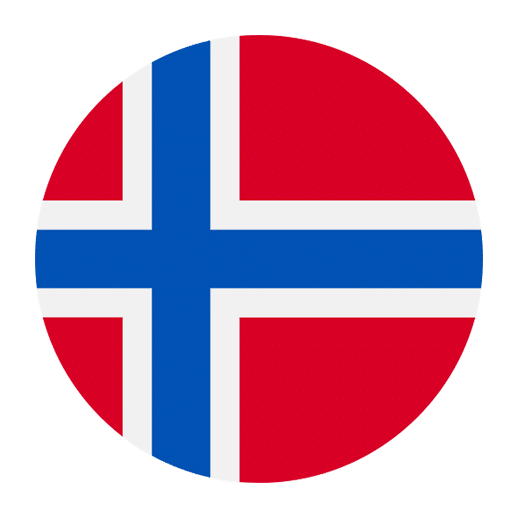Understanding Norwegian Monetary Units and Prices
When learning a new language, gaining a grasp of the local currency and understanding how prices work are essential skills. In Norway, the official currency is the Norwegian Krone (NOK), symbolized as “kr”. This article aims to provide a comprehensive overview of Norwegian monetary units and how prices are set and understood within the country. For English speakers learning Norwegian, this knowledge will be invaluable for everyday interactions, from shopping to dining out.
The Norwegian Krone: An Overview
The Norwegian Krone, abbreviated as NOK, has been the official currency of Norway since 1875. The word “krone” means “crown” in Norwegian, and you will often see it written as “kr” in shops and restaurants. The krone is subdivided into 100 øre, though øre coins are no longer in circulation due to their low value. However, the concept of øre is still used in pricing.
Banknotes and Coins
Norwegian money comes in both banknotes and coins. Here is a breakdown of the denominations:
Banknotes:
– 50 kr
– 100 kr
– 200 kr
– 500 kr
– 1000 kr
Coins:
– 1 kr
– 5 kr
– 10 kr
– 20 kr
While the øre coins have been phased out, you might still encounter prices that include øre, particularly in digital transactions. In such cases, the amount is rounded to the nearest krone when paying with cash.
Design and Security Features
Norwegian banknotes are known for their intricate designs and robust security features. Each denomination features prominent Norwegian figures and cultural symbols. For instance, the 100 kr note features the famous Norwegian opera singer Kirsten Flagstad, while the 500 kr note depicts the Arctic explorer Fridtjof Nansen.
Security features include watermarks, holographic strips, and color-shifting inks, all designed to prevent counterfeiting. Familiarizing yourself with these features can help you identify genuine notes.
Understanding Prices in Norway
Norway is known for its high cost of living, and understanding how prices are set can help you navigate daily expenses. Prices in Norway include Value Added Tax (VAT), known as “merverdiavgift” (MVA) in Norwegian. The standard VAT rate is 25%, though reduced rates apply to certain goods and services.
Typical Expenses
Here are some typical expenses you might encounter in Norway:
Groceries:
– A liter of milk: 18-20 kr
– A loaf of bread: 25-30 kr
– A kilogram of apples: 25-30 kr
Dining Out:
– A meal at an inexpensive restaurant: 150-200 kr
– A three-course meal for two at a mid-range restaurant: 800-1000 kr
– A cup of coffee: 30-40 kr
Transportation:
– Single bus or tram ticket: 35-50 kr
– Monthly public transport pass: 700-900 kr
– Taxi fare per kilometer: 15-20 kr
Accommodation:
– Monthly rent for a one-bedroom apartment in the city center: 10,000-15,000 kr
– Monthly rent for a one-bedroom apartment outside the city center: 7,000-10,000 kr
Payment Methods
Norway is a largely cashless society, and electronic payments are widely accepted. Here are some common payment methods:
Credit and Debit Cards
Most Norwegians use credit or debit cards for everyday transactions. Visa and MasterCard are widely accepted, while American Express and Diners Club are less common. Contactless payments are also popular, making it easy to pay for small purchases quickly.
Mobile Payments
Mobile payment apps like Vipps are increasingly popular in Norway. Vipps allows users to send and receive money using their mobile phones. It’s commonly used for splitting bills, paying for goods and services, and even making donations.
Cash
While cash is still accepted, it’s less common in urban areas. In rural areas, you might find more places that prefer cash, so it’s a good idea to carry some with you when traveling outside major cities.
Bargaining and Discounts
In Norway, haggling is not a common practice. Prices are generally fixed, especially in retail stores and restaurants. However, there are some situations where you can find discounts:
Sales and Promotions
Norwegian retailers often have sales and promotions, particularly during seasonal changes. Look out for “salg” (sale) signs in stores. Major sales events include:
– January sales (after Christmas)
– Summer sales (June and July)
– Black Friday (end of November)
Student Discounts
Many places offer student discounts, especially for public transportation, museums, and cultural events. You’ll need a valid student ID to take advantage of these discounts.
Tax-Free Shopping
If you’re a tourist in Norway, you can take advantage of tax-free shopping. Many stores participate in the tax-free scheme, allowing you to claim a refund on the VAT for purchases over a certain amount. Here’s how it works:
1. Look for stores with “Tax-Free” signs.
2. Ask for a tax-free form when making a purchase.
3. Fill out the form and keep your receipts.
4. Present the form and receipts at the airport when leaving Norway to receive your VAT refund.
Online Shopping and E-Commerce
Online shopping is popular in Norway, and many Norwegians use e-commerce platforms for a wide range of products. Here are some key points to keep in mind:
Popular Online Retailers
Some of the most popular online retailers in Norway include:
– Komplett.no: Electronics and gadgets
– Zalando.no: Fashion and clothing
– Finn.no: Second-hand goods and classifieds
Shipping and Delivery
Most online retailers offer various shipping options, including standard and express delivery. Delivery times can vary, but standard delivery typically takes 2-5 business days. Some retailers offer free shipping for orders over a certain amount.
Payment Options
When shopping online, you can usually pay with credit or debit cards, PayPal, or mobile payment apps like Vipps. Make sure to check the retailer’s payment options before making a purchase.
Tips for Managing Expenses in Norway
Living in Norway can be expensive, but there are ways to manage your expenses and make the most of your money. Here are some tips:
Budgeting
Create a monthly budget to track your income and expenses. Include categories for rent, groceries, transportation, dining out, and entertainment. This will help you identify areas where you can cut costs.
Cooking at Home
Eating out can be expensive in Norway, so consider cooking at home more often. Groceries are generally more affordable, and you’ll have more control over your food budget. Look for local markets and discount grocery stores for better deals.
Using Public Transportation
Public transportation is efficient and reliable in Norway. Consider using buses, trams, and trains instead of taxis or owning a car. Monthly passes can save you money if you use public transportation regularly.
Taking Advantage of Free Activities
Norway offers a wealth of free activities, especially outdoor adventures. Explore the country’s stunning natural landscapes, go hiking, or visit public parks and museums with free admission days.
Conclusion
Understanding Norwegian monetary units and prices is a crucial part of adapting to life in Norway. By familiarizing yourself with the local currency, common expenses, payment methods, and ways to save money, you’ll be better equipped to navigate the financial aspects of daily life. Whether you’re planning a short visit or a long-term stay, this knowledge will help you make informed decisions and enjoy your time in Norway to the fullest.
Learning a language involves more than just mastering vocabulary and grammar; it’s also about understanding the cultural and economic context in which the language is spoken. By gaining insight into Norway’s monetary system and pricing, you’ll enhance your language learning experience and develop a deeper connection with the country and its people.

